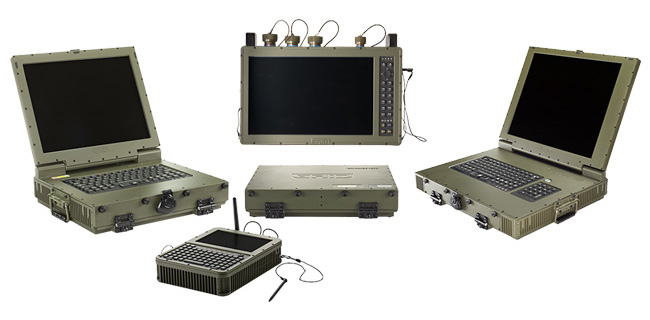It’s a requirement that has been raised many times: you need a tablet or computer that has to operate in conditions that are far more challenging than those encountered around the office, home or airport lounge. You need a computer that can continue to work reliably despite the inevitable falls and knocks encountered during the task in mind, and also in the tough environmental conditions that will be experienced. The answer appears simple: you need a ‘rugged’ computer. However, the answer is very far from simple. What, exactly, is a ‘rugged’ computer? And, more importantly, how rugged is rugged?
An internet search for ‘rugged computer’ will reveal a wealth of products ranging in price from several hundred dollars to many thousands. Although you have identified the general class of product you are after, you’re not much nearer to finding the product that is right for you. To start with, it helps to understand the field of products available, and to identify their intended use.

GRiDCASE 1590, one of GRiD’s rugged computers, during sand and dust testing
The low end – commercial ruggedisation
At the lowest end of the market are what might be better described as ‘ruggedised’ commercial computers. They are based on standard commercial products that have some additional ‘toughness’ built into them. This might mean a thicker case for increased shock resistance and basic waterproofing.
While they may be more than adequate for a delivery driver, or for use on a civilian construction site, they will not last long in tougher environments, and certainly not in the hands of a dismounted soldier in the heat of battle in an extreme climatic environment.
In most instances the shock resistance levels of commercial ruggedised products do not even begin to meet military requirements, and waterproofing is limited to glued seals that are easily damaged and penetrated. The ports are standard commercial components with just a rubber flap to protect them. Moreover, the PCBs (printed circuit boards) inside are often sealed in a resin coat to increase “ruggedisation”, meaning that repairs are costly.
Mid-market – semi-ruggedised computers
Moving up the scale are what might be described as semi-rugged computers. They are certainly tougher than a ‘ruggedised’ commercial laptop or tablet, for instance, but they still offer only limited shock resistance, and only meet limited qualification standards. They may be adequate for harder commercial requirements, but for full battlefield applications a much tougher computer is required.
In this mid-market space there are a number of products and suppliers available, but again it is difficult to differentiate between them without an intimate knowledge of the requirements as well as how they are manufactured and tested. While this may not be a challenge for experienced systems engineers, it could be for programme managers and procurement officials who are not specialists in electronics. Moreover, the field can be clouded by some suppliers offering products that may not be quite as ‘rugged’ as they claim they are.
There are some standards applicable to the field, but they are fairly broad-reaching and not specific enough to sort the semi-rugged from the fully rugged. To find a path through this labyrinth it is important for the potential buyer to ask questions, and to know the right questions to ask.
High-end ruggedised computers – what to look for
Accreditation is a good place to start: is the product fully accredited? And, if so, who has performed the accreditation? If it is a reputable third-party testing house that is recognised by the UK Accreditation Service (UKAS), such as those used by GRiD Defence Systems, then testing and approvals carry much greater weight.
Another factor to explore is the history of the supplier’s products in similar areas of operation and with similar customers. Performance in the field is a key indicator of the level of ruggedness, particularly the MTBF (mean time between failures) of alike products.
As products at this end of the market are not cheap, it is important that they will last. Longevity should be designed into the product from the outset, with the need for the computer to remain fully sealed throughout its lifetime to maintain the integrity of its protective features.
Also, the materials used in its construction and protection are foundational elements in the ruggedness of the product. A single-piece aluminium chassis – as used in GRiD computers – offers unrivalled protection for the crucial electronics within, backed up by a special plating and paint finish. Similarly, is toughened glass employed over the display screen? This is not only needed to protect the screen itself, but also to maintain sealing, even when shattered. The nature of the glass can also be important to meeting EMC (electromagnetic compatibility) requirements.

An example of some of the fully rugged computers GRiD manufactures
Is every aspect of the computer protected?
No matter how tough the casing, every computer chassis needs a keyboard and apertures to mount ports for peripherals and power, and these can be a source of penetration by moisture. How they are sealed is an important element in choosing a rugged computer, as well as how the interfaces are protected when not in use. Do they have a simple bung-type cover, or do they have a sealing screw-on cap that cannot be removed inadvertently? And is the cap attached by a steel lanyard so that it can never be lost?
High-end rugged computers such as GRiD’s solutions also utilise military-spec connectors such as the D38999 series, which are complex multi-pin connectors that are heavily protected for industrial and rugged applications. These are premium items but are essential when it comes to full ruggedisation and ensuring that the product can last in tough environments over extended periods.
Read more: D38999 connectors – why a classic connector remains key to military electronics
Choosing a product from an original equipment manufacturer (OEM) is a further step to acquiring a product that meets the toughest demands. Only an OEM is in control of all aspects of the computer build, from design, through choice of components and producing the chassis, to sealing and completion. If you have a specific and complex challenge you want solving, an OEM will often be able to come up with an optimum solution.
Building the computer from the ground up and selecting the right grade of equipment at every step is the key to producing truly rugged computers. This results in a far superior product than attempting to ruggedise commercial hardware. Third-party accreditation of the product and its components at the highest level while exhibiting excellent performance in the field gives prospective customers the confidence they need to trust the true ruggedness of the product.
If you would like to discuss what to consider when buying a rugged computer, please get in touch on +44 (0)1628 810 230 or drop an email to sales@griduk.com.

